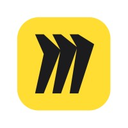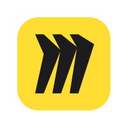Miro vs Float (2025 Comparison)

Miro offers a versatile platform for creative collaboration, with an extensive template library and real-time features. It's perfect for teams looking to brainstorm and plan together.
- Extensive template library
- Real-time collaboration features
- Wide range of integrations
- Steep learning curve
- Can be overwhelming for new users
Free plan?
YesStarting price
$8 per month per member
Float provides excellent resource management and intuitive interface, making it ideal for project managers who need to allocate resources efficiently and track progress.
- Excellent resource management
- Intuitive user interface
- Strong reporting features
- Limited template options
- Focuses mainly on resource management
Free plan?
YesStarting price
$6.50 per person/monthWhat is Miro?
Miro is a versatile online collaborative whiteboard platform designed to help teams work together seamlessly. It offers a wide range of tools for brainstorming, planning, and visualizing ideas, making it an ideal choice for creative teams and project managers. With Miro, you can create mind maps, flowcharts, and wireframes, all in one place. Its intuitive interface and extensive template library make it easy for users to get started, while its real-time collaboration features ensure that everyone stays on the same page. Whether you're working remotely or in the office, Miro helps you bring your ideas to life.
What is Float?
Float is a leading resource management software that helps teams plan, schedule, and track their projects with ease. It provides a clear overview of team availability, project timelines, and resource allocation, making it an essential tool for project managers and team leaders. With Float, you can easily assign tasks, manage workloads, and ensure that your team is working efficiently. Its user-friendly interface and powerful reporting features make it easy to stay on top of your projects and make informed decisions. Whether you're managing a small team or a large organization, Float helps you optimize your resources and achieve your goals.
Pros and Cons of Miro vs Float

Pros & Cons of Miro
- Miro offers a vast array of templates that cater to various needs, from brainstorming to project planning. This makes it easy for users to get started and customize their boards to fit their specific requirements.
- Miro's real-time collaboration capabilities allow multiple users to work on the same board simultaneously, making it an ideal choice for remote teams who need to brainstorm and plan together.
- Miro integrates with popular tools like Slack, Trello, and Asana, allowing users to connect their existing workflows and streamline their processes.
- Miro's extensive feature set can be overwhelming for new users, requiring time and effort to fully understand and utilize its capabilities.
- The sheer number of features and options available in Miro can make it difficult for new users to navigate and find the tools they need.

Pros & Cons of Float
- Float excels in resource management, providing detailed insights into team availability and project timelines, making it an essential tool for project managers.
- Float's user interface is clean and easy to navigate, allowing users to quickly find the information they need and manage their projects efficiently.
- Float offers robust reporting features that provide insights into project progress and resource utilization, helping teams make data-driven decisions.
- Float's template offerings are more limited compared to Miro, focusing primarily on resource management rather than creative collaboration.
- While Float excels in resource management, it may not provide the same level of functionality for creative tasks and collaboration as Miro.
Miro vs Float: At A Glance
Miro vs Float: A Detailed Breakdown of Key Features
Real-time Collaboration
Miro excels in real-time collaboration, allowing multiple users to work on the same board simultaneously. This feature is particularly useful for remote teams who need to brainstorm and plan together. Float also offers collaboration features, but they are more focused on resource management rather than creative collaboration. If you need a tool that facilitates real-time collaboration, Miro is the better choice.
Template Library
Miro offers an extensive template library that caters to various use cases, from mind mapping to project planning. This makes it easy for users to get started and customize their boards. Float's template offerings are more limited, focusing primarily on resource management. If you value a diverse range of templates, Miro is the better option.
Resource Management
Float is a leader in resource management, providing detailed insights into team availability and project timelines. This feature is essential for project managers who need to allocate resources efficiently. Miro offers some resource management capabilities, but they are not as comprehensive as Float's. If resource management is your primary concern, Float is the better choice.
Task Assignment
Both Miro and Float offer task assignment features, allowing users to assign tasks to team members and track progress. Float's task assignment is more streamlined, making it easier for project managers to manage workloads. Miro's task assignment is integrated with its broader collaboration features, providing a more holistic approach. If you need a tool with strong task assignment capabilities, Float is the better option.
Reporting Features
Float offers robust reporting features that provide insights into project progress and resource utilization. This is particularly useful for teams that need to track performance and make data-driven decisions. Miro also offers reporting features, but they are more focused on collaboration metrics. If reporting is a key consideration, Float provides more comprehensive options.
User Interface
Float's user interface is clean and intuitive, making it easy for users to navigate and find the information they need. Miro's interface is also user-friendly, but its extensive feature set can make it feel overwhelming for new users. If you prioritize a simple and intuitive user interface, Float is the better choice.
Pricing Comparison of Miro and Float
To assist you in making an informed choice, we’ve outlined the pricing plans and essential features of Miro and Float. This comparison will highlight the best option for your collaborative and resource management needs.

Miro Pricing Plans
- Record and share 5 Talktracks for interactive video board walkthroughs.
- Access to 3000+ Miro and community-made templates for quick start.
- Connect with 100+ apps and integrations like Zoom, Slack, Google Drive.
- Try Miro AI with 10 credits per month per team for enhanced productivity.
- 1-click collaborator access with unlimited visitors on public boards.
- Organize and find boards faster with dedicated Spaces for efficiency.
- Recover lost content and content versions with board version history.
- Create and modify with Miro AI - 25 credits per month per member.
- Securely collaborate outside your team with unlimited guests.
- Visualize processes with 2500+ advanced diagramming shapes.
- Import and manage multiple issue types from Jira on our Planner.
- Accelerate workflows with Miro AI - 50 credits per month per member.
- Simplify admin tasks with SCIM, request management, and more.
- Centralized account management and insights for adoption and usage.
- Ensure enterprise-grade security with SSO, domain control, and more.
- Fast-track innovation with Miro AI - 100 credits per month per member.

Float Pricing Plans
- Capacity management and forecasting to optimize resource allocation.
- Mobile app and integrations for seamless connectivity and access.
- Unlimited guest users to collaborate with external stakeholders.
- 24 hour/5 day support for timely assistance and issue resolution.
- Pre-filled timesheets to streamline time entry and reduce errors.
- Desktop timer app for easy time tracking and productivity.
- Saved custom views for personalized project management experience.
- 180 day audit log for comprehensive tracking and compliance.
- Service Level Agreements (SLA) for guaranteed service quality.
- Personalized onboarding for smooth transition and setup.
- Priority support for quick resolution of critical issues.
- Manual payment options for flexible billing arrangements.
Our Rating Methodology
We thoroughly evaluate each tool, focusing on key factors like functionality, ease of use, and integrations. By analyzing user reviews and conducting hands-on testing, we ensure our recommendations are accurate and reliable. Each factor is weighted to provide a final score, helping you make informed decisions.
Miro or Float: Which One Matches Your Business Needs?
Choose Miro If You Need ...
- Versatile collaboration platform
If you need a versatile collaboration platform with a wide range of features, Miro is the better choice. Its extensive template library and real-time collaboration tools make it ideal for creative teams and project managers.
- Extensive integrations
If you require extensive integrations with popular tools like Slack and Trello, Miro is the better option. Its wide range of integrations allows you to connect your existing workflows and streamline your processes.
Choose Float If You Need ...
- Resource management focus
If you need a tool focused on resource management, Float is the better choice. Its detailed insights into team availability and project timelines make it an essential tool for project managers.
- Intuitive user interface
If you prioritize an intuitive user interface, Float is the better option. Its clean and easy-to-navigate interface allows users to quickly find the information they need and manage their projects efficiently.
Frequently Asked Questions
 Which tool is better for creative collaboration?
Which tool is better for creative collaboration?
 Which tool offers better resource management?
Which tool offers better resource management?
 Which tool has a more intuitive user interface?
Which tool has a more intuitive user interface?
 Which tool offers more integrations?
Which tool offers more integrations?
 Which tool is more cost-effective?
Which tool is more cost-effective?
 Which tool provides better customer support?
Which tool provides better customer support?

Anastasia Belyh
Anastasia Belyh is a senior tech writer with over 15 years of experience in marketing, sales, and business software. Having worked in investment banking, management consulting, and founded multiple companies, her in-depth knowledge and hands-on expertise make her software reviews authoritative, trustworthy, and highly practical for business decision-makers.



